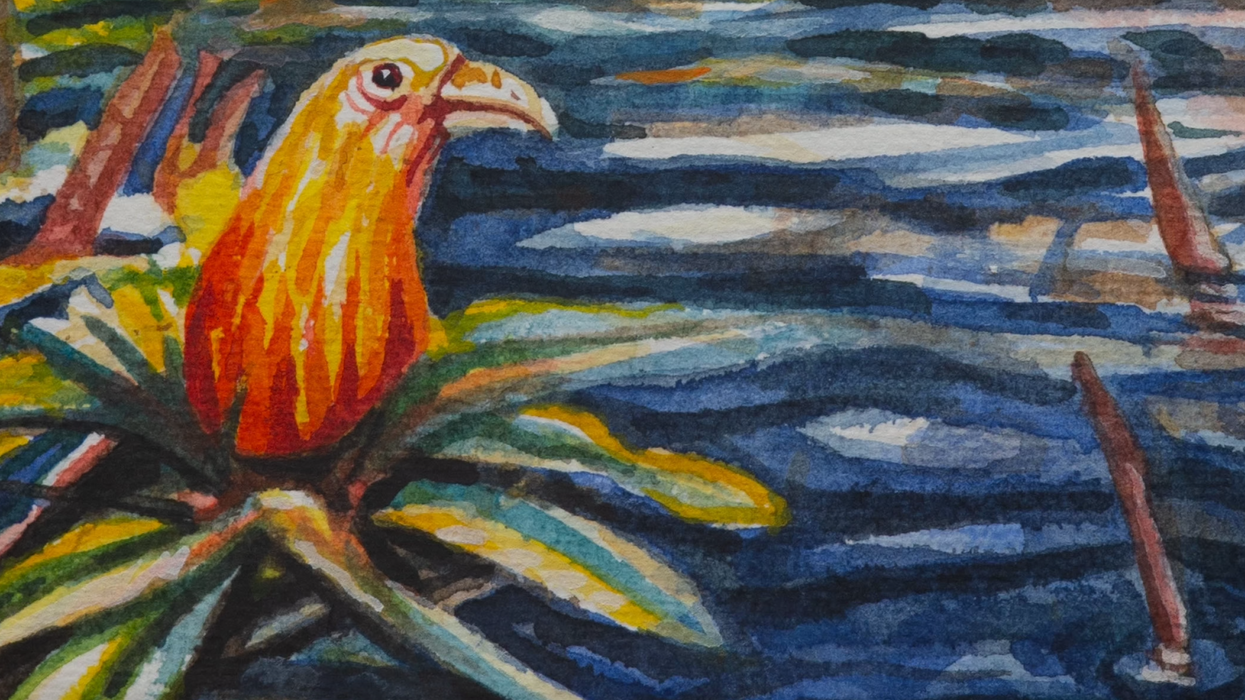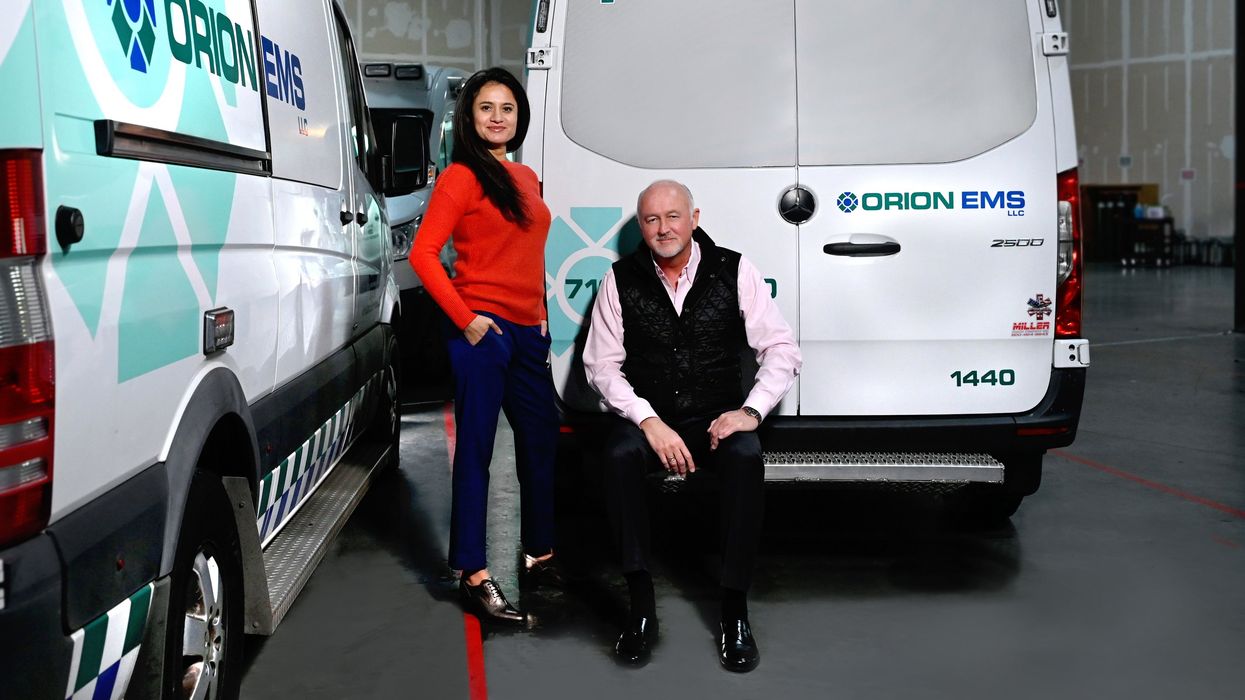Watercolorist Collins Paints the Town, Caps a Busy Holiday Season with Solo Show at Redbud

A detail of 'Harbor Nest' by Collins
THE HOLIDAY SEASON has been especially busy for Houston artist Michael Roqué Collins. The day after Thanksgiving, an epic series of Collins’ oil-on-canvas paintings titled In the Chama, Where the Spirit Flowsopened at LewAllen Galleries in Santa Fe, NM. Meanwhile, two of his paintings are included in Crosscurrent Yokohama – Texas Exchange 2023, a cross-cultural group show of works by 25 artists from Japan and Texas, currently on view at the Wichita Falls Museum of Art. Coastal Gardens, an exhibit of recent, smaller-size watercolors will be on view at Redbud Arts Center Dec. 2-27.
The watercolors in Coastal Gardens portray the uneasy existence between the natural world and manmade industry, and on one level, can be viewed as studies for Collins’ large-scale oil paintings. “I pour loads of time into these smaller, little jewels,” says Collins. “There’s something really exciting about how the watercolor can be so small, and have enough information packed in for a large-sized oil painting.” But there is an unsettling quality to each of these meticulously realized miniatures as if a fuzzy memory or portent of the future has materialized before your eyes. (The working title of the show was Chemical Gardens.)
In conversation, Collins speaks about art with what one imagines was the same level of enthusiasm he exhibited growing up as an only child in a three-bedroom home on Drexel Street and watching his parents, both practicing artists, making things. Each room in the house opened up into a garden filled with garcinias, philodendrons, and bromeliads — plants Collins would draw with Crayola crayons. The imagined vegetation in Coastal Gardens harkens back to this childhood subtropic existence, as well as memories of fishing with his father on the banks of the Texas City coastline, where they observed the beauty of nature on one side of the water and foreboding chemical plants on the other. In a catalog of his works published in 2009, Collins writes: “As I child, I was naive as to the conflict of nature versus man, enjoying those moments only as cherished experiences with my father. Growing older, I grew more and more concerned with man and nature’s conflicts.”
And yet, as it is in all of Collins’ paintings, there is a light that never goes out; the flora and fauna in his watercolors are alive and growing, creeping into the ruins of industry and chemical wastelands. “The visions that I’ve had are certainly cautionary,” says Collins. “I think we can certainly decide to do certain things that will help the planet, but the more time that goes by, I believe art has to ask the question, ‘Where are we in all of this?’”

'Bound In My Chemical Garden II'

'Coastal Rails'

'Bound In My Chemical Garden II'

'Turning Basin'
- A Son Remembers His Dad — and Fellow Artist — Through a Retrospective at Redbud ›
- Two Artists Cultivate Friendship from Halfway Across the Globe — and Show Their Work at a Houston Gallery - Houston CityBook ›








